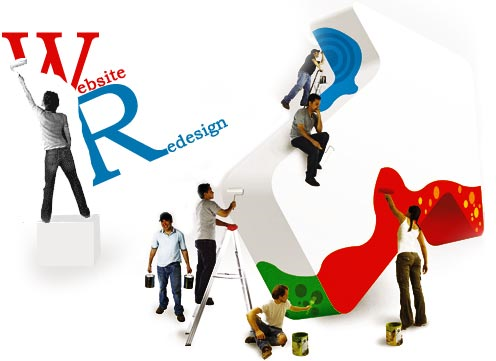
Having a shoddy website that performs lethargically is no different than hiring the board shorts-wearing 12-year-old down the street as your client service representative. Like your teen, an outdated website alters clients’ perceptions of your brand image.
It doesn’t know how to carry out all the tasks that are needed to push up your profits. A low-quality website is interpreted by customers as the doorway to a low-quality business.
This filters down into your brick-and-mortar sales. 78% of shoppers research the product they want to buy online before they visit outlets. Forrester Research found that, in 2008, 10% of U.S. retail sales were anticipated to be made online.
Social media, mobile marketing, video marketing…the list of tools in use to redesign your business website is extensive, and each one empowers marketing efforts individually and as part of an integrated toolbox.
Half of the small businesses across industries use modern technology to market their wares. With imagination on your side and a few basic principles, your website should do twice the work of your sales team at half the investment.
If that doesn’t convince you, your wallet might. Much of the technology you need is free. On average, web-based marketing costs two-thirds less than old-fashioned techniques.

The Basics
A website is best seen as a model human that does the job of an entire team. Online media have made it not only possible but necessary, for sites to give customers a feeling of intimacy.
Your site must make friends with strangers, turn friends into buyers, and buyers into return clients. This is done through what is termed conversion, which simply means seducing a customer to take one step closer to the point of sale when you redesign your business website.
Conversions can be:
- Clicking into an important page
- Providing contact details through newsletter sign-ups or registration
- Making a purchase
- Sharing reviews
1) Adding Value
Marketing mogul, Seth Godin, sees connection as a priority, asking, “If you didn’t update your site, send another marketing email, upload a new blog post, are there people who would care?”
Connection is best achieved if your marketing is brave and interesting rather than overtly promotional, and it’s in this way that you can become a valued part of your customers’ lives.
Today’s buyers are suspicious of promotional marketing, so today’s websites instead try to inform and entertain, with an undertone of promotion that is almost imperceptible.
Your website is the metaphorical equivalent of a single shop. It relies on traffic from those passing by and can’t hop onto its pixilated legs to follow your clients everywhere they go.
It has the powers of Peter Parker before a radioactive spider turned him into Superman. There are tools that add muscle to your marketing by giving customers what they would benefit from even if they didn’t buy your product.
They meet buyers while they shop, socialize, and entertain themselves. There are six ‘radioactive spiders’ your site needs to grow its reach. Adding value comes first, and it is done with these tools:
2) The Mighty Mobile
Mobile-friendliness has jack-in-the-box momentum. Customers who view a standard website do so from an office or living room. A website that can be viewed on mobile devices such as smartphones and tablets stands to attention whenever your clients need it. 
91% of adults keep their smartphones at hand constantly and a quarter access the internet solely through their phones.
Once you redesign your business website site to be mobile-compatible, you will have knocked out a foundation from which you can build an entirely new and innovative campaign that meets clients as they shop in your store. It can offer reviews and special offers directly before purchase while customers roam your brick and mortar business.
3) Social Media
Social media sites like Facebook and Twitter are powerhouses when used as outbound tools, but a few lines of code on your web pages stretch that reach. By making your pages sharable, you let clients do your marketing for you.
The investment into this feature seems negligible when you redesign your business website, but you will need to generate entertaining, current, relevant content that attracts ‘shares’ or ‘tweets’.
Communicating through Facebook lets you improve your service and collect marketing data while you communicate, helping you to convert buyers into loyal clients. This is only the first rung—the grand prize is loyal fandom.
Apple no longer generates its own content. It’s spawned enough passion to have earned a ring of global fans who blog and share on its behalf, and none of them desire payment.

As a small business, it’s unlikely you will be able to drum up quite as large a fan base, but the principle of Apple’s campaign is one you can benefit from.
Video marketing evolved into a best practice at around the time DropBox shot to stardom. Drew Houston, its owner, turned what was the internet’s most costly startup failure into a resounding success by adding a two-dimensional two-minute video to its home page, starting a lasting trend.
By 2017, 69% of internet traffic will be video-related. Businesses exploit video marketing best when they attach their clips to both YouTube and their own pages to gather traffic from a popular site with millions of viewers, filtering them into their own websites.
4) Don’t Kick out Your Clients
When you redesign your business website, clumsy mechanics will lose new buyers faster than you can count your losses. Competing in a global marketplace expands your competition, and clients struggling to register or navigate can find another business in seconds.
Your website should upsell your customers, a tricky process in itself without making them struggle against the barriers of buttons that don’t work and forms that have glitches.

5) Beyond the Fold
Only 22% of users bother to scroll to the lower parts of a web page. Above the fold is an archaic term for the upper section newspapers. This is prime terrain for grabbing attention, deserving focus when you redesign your business website.
Publications once littered this space with as much content as they could, but information overload has made readers too overwhelmed for clutter.
Strong value propositions are a more magnetic way to engage. Graphics can be used to draw the eye down the page to encourage scrolling. Alternatively, podcasts and videos above the fold carry far more content than text could hope to achieve.
6) Change Things Up
The seeming complexities of keeping up to date with constant innovations can feel intimidating, but today’s technology makes much of your work hands-free.
It counts your impact for you, tells you where you’re going wrong, and points you in better directions. Online marketing creates instant impacts when it evolves constantly. Search engines become bored with static sites.
Blog entries and page additions remind Google that your site exists. Customer interests change, too—a tendency that is easy to spot through the kind of content that goes viral.
RSS and Feedly show you what the hottest topics are so that you can incorporate them to generate traffic. When you’re planning a risky new campaign, running it as a side project helps you to gauge response before adding it to your website.

-1.png)


